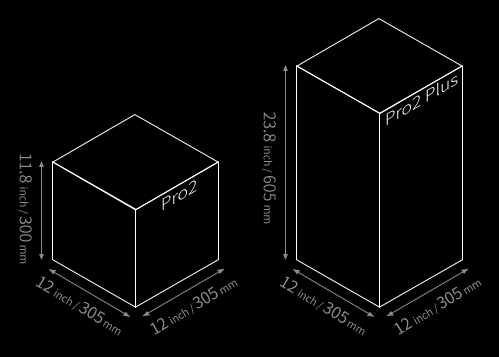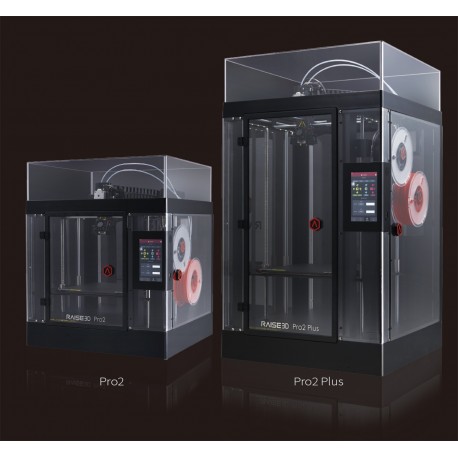
Raise 3D Pro2 Series | Industrial 3D Printer
Reference: Raise 3D Pro2 Series
Condition: New product
Raise 3D Pro2 is the newest design of 3D printer with its dual nozzle & a larger working area is the best for making multiple or large scale 3D printing. Raise 3D is the best & largest 3D printer in Philippines. Raise 3D’s new dual extrusion system, which is unique in this Series. It refers to the technology used to switch from nozzles 1 & 2 while printing, it one of the most fluent dual systems.
Features
Up to
12×12×23.8 inch | 305×305×605 mm
- 24/7 Reliability
- Multiple fail safe systems
- Industrial grade components
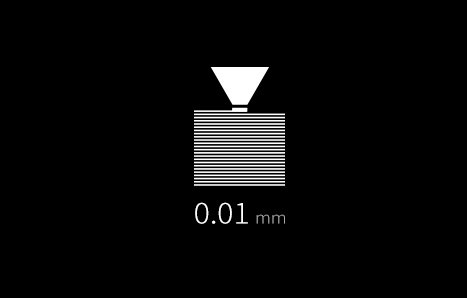
Unique motion system for superior part quality and resolution
Interchangeable nozzles:
0.2mm nozzle for finer X/Y detail
Precise positioning:
0.78125-micron positioning resolution on X/Y axis
Unmatched layer resolution:
0.01mm layer thickness
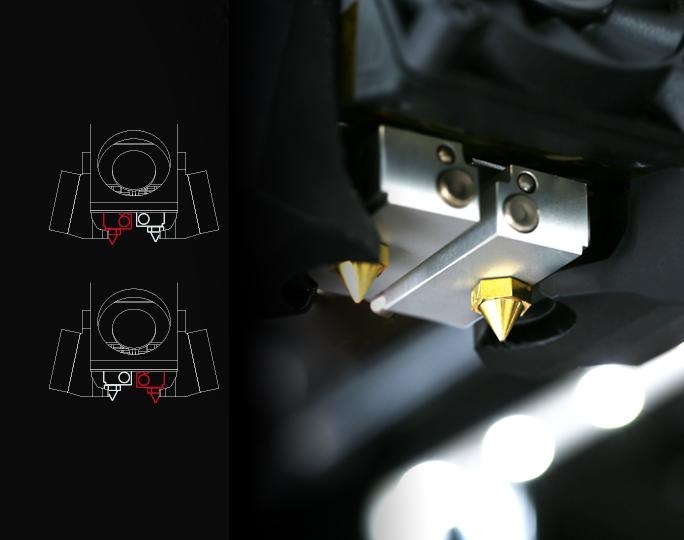
Electronic Driven Dual Extrusion with Retracting Hot Ends
Prints complex mechanical parts, supports a variety of multi-material filaments and improves print speed.
• High repeatability (<0.005m, 5 micron)
• Lightning speed (< 1 second switching time)
• 1.5mm lifting distance, compatible with flexible filaments
• High reliability (tested > 100,000 times)

Capable of Printing a Variety of Filaments Up to 300℃
PLA / ABS / HIPS / PC / TPU / TPE / NYLON / PETG / ASA / PP / PVA / Glass Fiber Infused / Carbon Fiber Infused / Metal Fill / Wood Fill
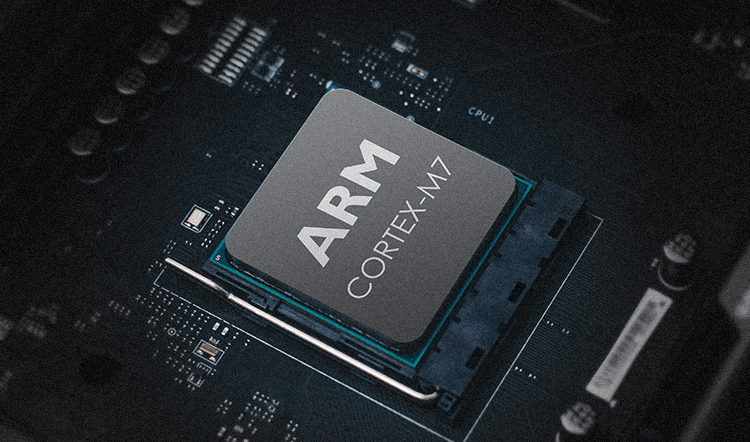
Next Generation Motion Controller
Best in class reliability / precise voltage control / Silky smooth movement / Superior thermal performance
- 400MHz ARM Cortex-M7 32bit RISC FPU
- Industrial grade components
- Stand-alone motor driver
- 256 micro-steps driver system
Intuitive User Experience
Visual interface / rapid reviewing / Visual print progress / Full adjustment control

7-inch touch screen

Integrated setting control
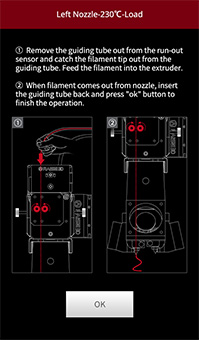
On-screen assistance
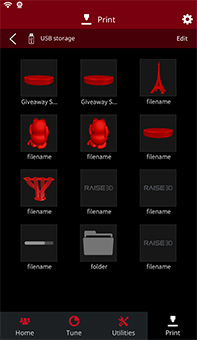
Visual model selection
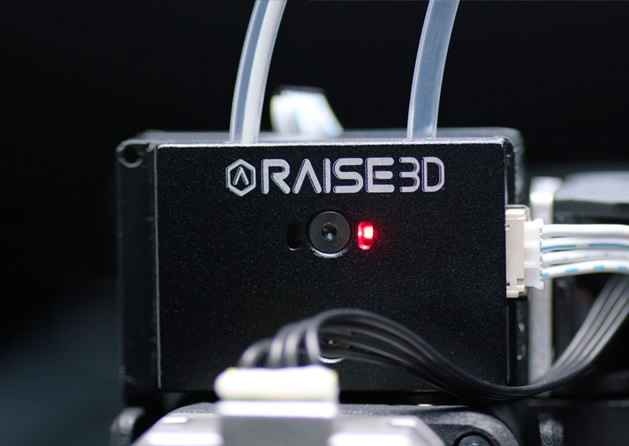
Effortless, Dependable and Accurate with optical run-out sensors and end stops
- Better grip: Dual gear driven
- No slipping: 4× increased torque performance
- Worry-free prints: Optical run-out sensor
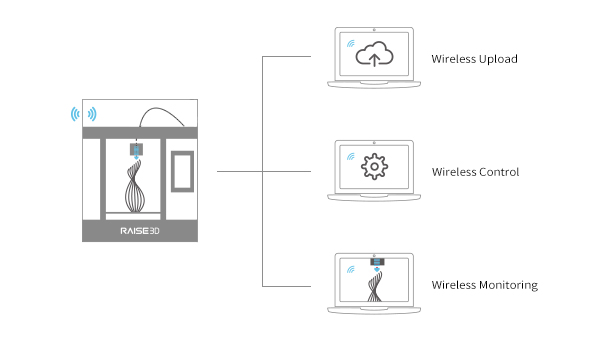
Remote User Interface
Access / Monitor / Control
Operate efficiently with idea Maker by connecting wirelessly to your Pro2 Series Printer
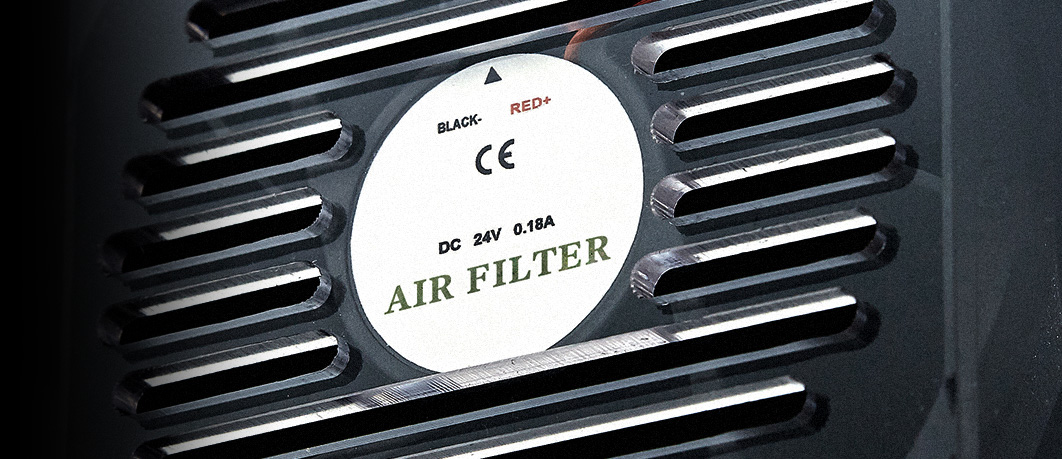
HEPA Air Filtration
Environmentally friendly
Designed to silently remove nano-particles

Build Plate System
Excellent warping prevention / Even heat distribution / Longer lifetime / Easy to remove
- Aerospace-grade material
- High-temperature silicone heating bed
- Magnetically-held aluminum bed
- Improved 4+9 points locks system
Tech specs
|
ITEM |
Pro2 |
Pro2 Plus |
|||
|
CONSTRUCTION |
Build Volume (W×D×H) |
||||
|
Single Extrusion Print |
Dual Extrusion Print |
Single Extrusion Print |
Dual Extrusion Print |
||
|
12×12×11.8 in 305×305×300 mm |
11×12×11.8 in 280×305×300 mm |
12×12×23.8 in 305×305×605 mm |
11×12×23.8 in 280×305×605 mm |
||
|
Machine Size (W×D×H) |
|||||
|
24.4×23.2×29.9 in / 620×590×760 mm |
24.4×23.2×43.5 in / 620×590×1105 mm |
||||
|
ELECTRICAL |
Power Supply Input Power Supply Output |
100-240 V AC, 50/60 Hz 230 V @ 3.3 A 24 V DC, 600 W |
|||
|
PRINTER |
Print Technology Print Head Filament Diameter XY Step Size Z Step Size Print Head Travel Speed Build Plate Max Build Plate Temperature Heated Bed Material Build Plate Leveling Supported Materials Nozzle Diameter Max Nozzle Temperature Connectivity Noise Emission (Acoustic) Operating Ambient Temperature Storage Temperature Technical Certifications |
FFF Dual-head with electronic lifting system 1.75 mm 0.78125, 0.78125, 0.078125 micron 0.078125 micron 30 - 150 mm/s Heated aluminum build plate with magnetic holding 110 °C Silicone Pre-calibrated leveling PLA / ABS / HIPS / PC / TPU / TPE / NYLON / PETG / ASA / PP / PVA / Glass Fiber Infused / Carbon Fiber Infused / Metal Fill / Wood Fill 0.4 mm (Default), 0.2/ 0.6/ 0.8/ 1.0 mm (Available) 300 °C Wi-Fi, LAN, USB port, Live camera <50 dB(A) when building 15 - 30 °C, 10 - 90 % RH non-condensing -25 °C to +55 °C, 10 - 90 % RH non-condensing CB, CE, FCC, RoHS |
|||
|
SOFTWARE |
Slicing Software Supported File Types Supported OS Machine Code Type |
ideaMaker STL/ OBJ/ 3MF WINDOWS / macOS / LINUX GCODE |
|||
|
PRINTER CONTROLLER |
User Interface Network Resume Print after Power Outage Screen Resolution Motion Controller Logic Controller Memory Onboard Flash OS Ports |
7-inch Touch Screen Wi – Fi, Ethernet Firmware recording, no need for battery installation. Protection from any condition 1024*600 ARM Cortex M7.400MHZ FPU Freescale i.MX6, Quad core 1Ghz ARM processor 1 GB 8 GB Embedded Linux USB 2.0*2, Ethernet*1 |
|||
Applications
Syther Gaming – Figures and Development
Aug 24, 2018
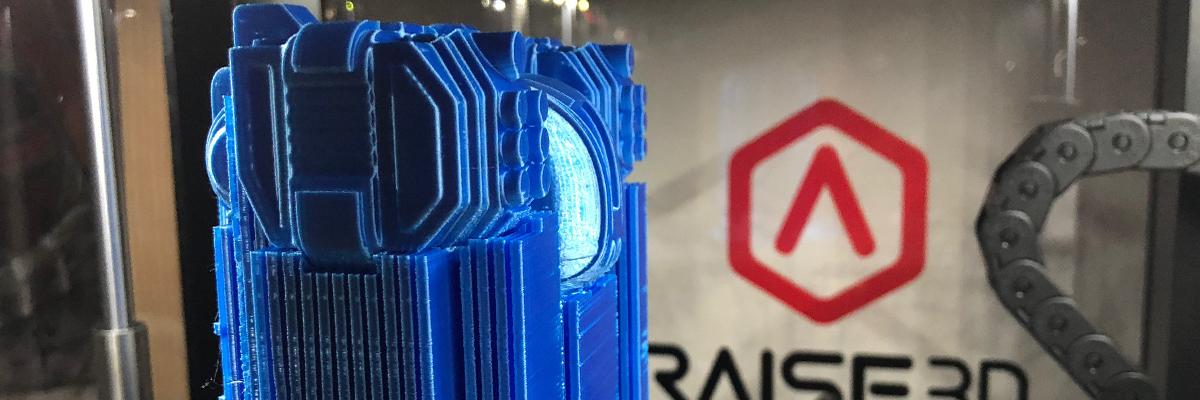
Product development and prototyping
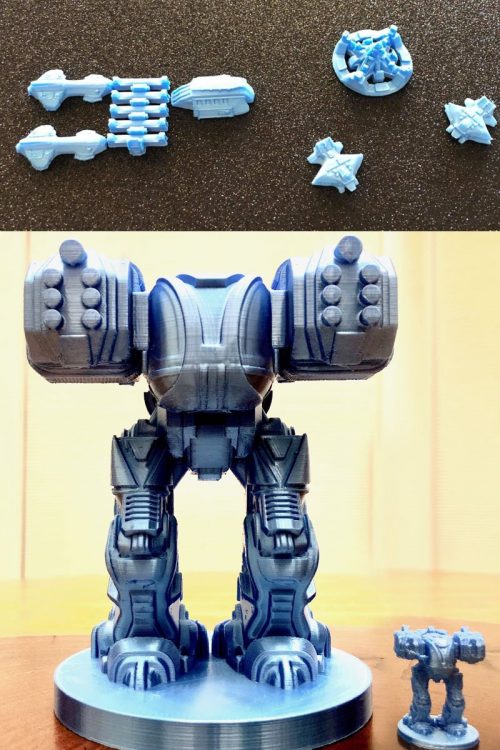
“Our Raise 3D printer has allowed us the ability to design, test and develop never before seen, in real time, near production quality board game components. Before our Raise 3D printer, development was just generic simple representations barely compatible with the quality results we are able to design and produce today.”
Rob McBride
President & Co-Founder; Syther Gaming
Syther Gaming is an indie game designer developer and publisher within the tabletop gaming and toy manufacturing industry. Syther Gaming’s vision is to establish leadership, innovation, and mastery within the board game genre by bringing to life creative, competitive, and interactive methods that use fun-to-play mechanics and familiar-yet-new components.
Their first game to market, “OverBattle: The All War” is scheduled for a US 12-city tour August – November 2018 at various Comic Con and Game Conventions coast to coast.
Tabletop gaming development is heavily reliant on storytelling and gameplay mechanics. In traditional game design, the ability to intertwine their art and figures to play into these elements comes at the final stages of design. For Syther Gaming, 3D printing has allowed them to develop the universe of their feature game alongside the other crucial elements for a cohesive final product.
Before including 3D printing, the industry’s traditional methods included:
1. Generic figures that did not provide storytelling art direction
2. A design process that left the art as an afterthought
3. Lack of model verification, or expensive prototypes
By applying 3D printing, the company was able to
1. Apply visuals early in the designing process
2. Create multiple prototypes inexpensively in-house
3. Increase production and development capacity with 24/7 production
The process of creating a new product begins with a 3D design. The Syther Gaming team begins by creating a 3D test file that is used to represent the board game’s designs and ideas. With each test, the team focuses on the strengths and limitations of their machinery and refines the model through a series of rapid prototypes to produce the best overall part designs.
Once the design is finalized, the team will source and test the model in a variety of materials to test the results and finish that will best suit the pieces. The end result is a polished final piece that has a “wow” factor which leaves a lasting impression on players that are interacting with the game.
Traditionally, game design involves using generic “meeple” stand-in game pieces. These basic cutouts are the industry standard for development. For Syther Gaming, the designers wanted to develop the visuals and see what is possible much sooner in the design process. The team quickly stopped using meeples, and used 3D printing for the first time to create their own v.1.0 pieces using a budget 3D printer.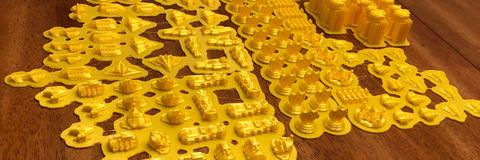
It was obvious our needs and desired quality required a better 3D print solution. Online research led me to Raise3D. The capacity, expandability, and prosumer level device made our choice to switch to the Raise3D printer a good decision.
By implementing a Raise3D printer, the Syther gaming team’s creative process allows them to see the goal from the beginning of the process. This is something that traditionally wouldn’t be possible until much closer to the final stages of a project. Their Raise3D printer allows them to continue working on the project at all hours with a trusted printer that can reliably run unattended, overnight, and continuously with large multi-day files. With this approach, the team has more time to design and develop the crucial features and game play because of the clear vision and goal that is created very early in the design process.
“With a trusted device, a month of 24/7 development is worth nearly 3 months in the world of many of our competitors. Gaining time gives Syther Gaming a competitive development advantage. We can come to market faster and make an instant statement and impact. We are actively looking to add to our print capacity by developing an in-house print farm to take this advantage even further”.
Syther Gaming’s first-to-market release of “OverBattle: The All War” is scheduled for a US 12-city tour August – November 2018 at various Comic Con and Game Conventions coast to coast. You can keep up with them and the tour by checking out Syther Gaming and Overbattle on FaceBook.
We look forward to seeing you on the road and at the game table!
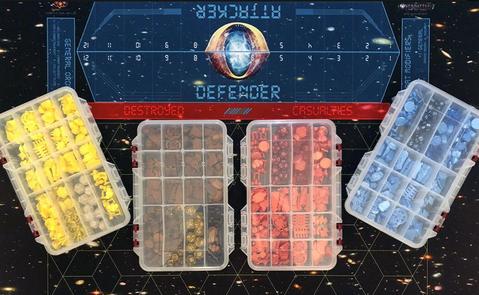
Industrial Grade Purifying Equipment
MAR 07, 2018
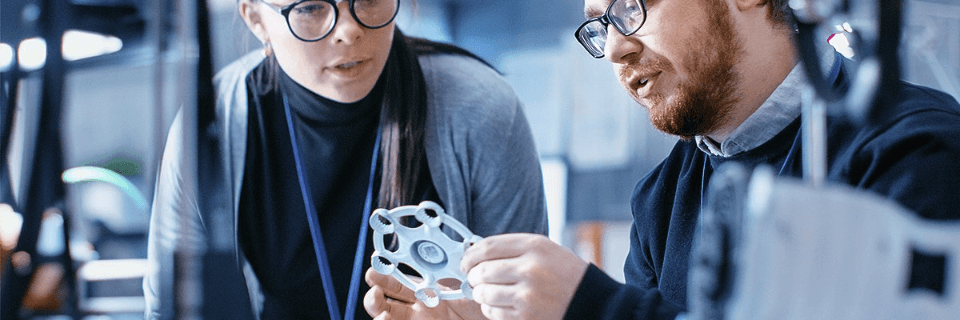
Prototyping, custom part creation, and visual display models
Kebaide Purifying Technology produces industrial grade purifying equipment and filter cartridges.These products span a range of heavy-duty applications from cars to factory machines. Their filter cartridges are designed to filter oil, water and gas.
Kebaide Purifying Technology specializes in customized parts to tackle the specialized needs of their clients. They are currently supplying purifying equipment and cartridges to Bao Steel, one of the largest and most advanced steel factories in China. While Kebaide is fairly new to their industry, 3D printing has allowed them to optimize their industry practices and offer their high standard of quality products.

Various 3D printed models featuring a non-standard end cup model with a gap for a rubber ring.
For the established industry of purifying technologies, most users have adapted to the standard line of products available. For Kebaide, 3D printing has allowed them to offer custom parts, in addition to lowering the costs of standard equipment.
Before 3D printing, Kebaide struggled with
1. Outsourcing. This slowed production and increased costs significantly due to the involvement of a 3rd party.
2. Variation. Custom parts were created typically by hand due to the lack of specialized equipment.Tolerance variations had to be accounted for with each rendition.
3. Rejection. Designs were frequently rejected by certain factories due to their lack of tools or inability to create such a small production part.
By applying 3D printing, the company was able to
1. Produce components in house reducing time and cost.
2. Maintain product consistency
3. Increase sales capabilities by creating scale models for display and demonstration
Company: Shanghai Kebaide Purifying Technology Co., Ltd
Industry: Industry Purifying Equipment
Interviewee: Xie, Zengliang
Title: Sales Manager
Process:
Kebaide Purifying Technology produces industrial-grade purifying equipment and filter cartridges. To begin a design, a tech staff member at Kebaide designs the original 3D model. This is done in CAD and eventually exported or converted into an STL file for use with 3D printing. Once designed, this gets printed on the in-house Raise3D N2. This initial model will be tested as they execute safety and fit tests. After passing initial testing, a completed functional prototype will be made. If the piece is approved, it will go into mass production.
Another feature of 3D printing for Kebaide is the ability to create exact replicas at scale. By creating a small-scale 3D model, vendors can transport and display samples of the finished product.

Display-sized models of purifying equipment.
Challenges:
The purifying industry is a long-standing industry that many clients have adapted to and regularly use. Most of these users only require a standard product, but for those requiring a non-standard piece, Kebaide is able to leverage their 3D printing tools.
Before implementing 3D printing, Kebaide outsourced all of the production and prototyping to separate factories. Even for standard parts, the factory produced parts primarily through intensive skilled labor. This resulted in long delivery times and models also had a degree of variation that had to be accounted for. Additionally, when producing specialty and non-standard designs, the requirements could easily fall outside of the factories' capabilities. In cases like this, if the price or order of parts is too low, it’s very likely that these types of factories will reject the prototyping order.
Solution:
Kebaide now uses a Raise3D N2 to rapidly-produce both standard and non-standard parts and prototypes for their clients. This 3D printing technology is both faster and cheaper than the alternative of outsourcing. With each part being produced through technology, parts can be replicated the same way every time which significantly lowers the variation in products that are produced through outsourcing. In general, this is able to reduce the overall management costs for Kibaide in the EVT phases of design.
As an added benefit, Kebaide is better equipped to market and promote their products. With portable display models they have the ability to vend and pitch their products within the scope of a desk or a suitcase; vastly increasing the capability and flexibility of their sales force.
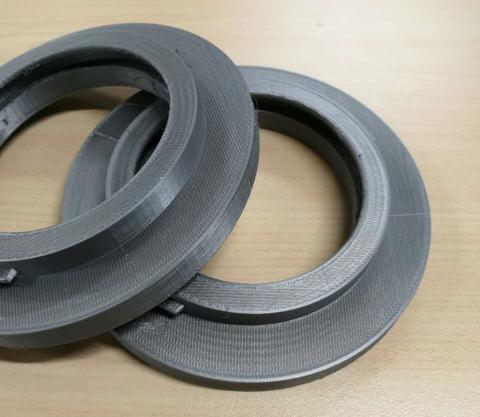
Model of an end cup filter cartridge
Engineering Student Prototyping and Fabrication with Raise3D
Aug 07, 2018
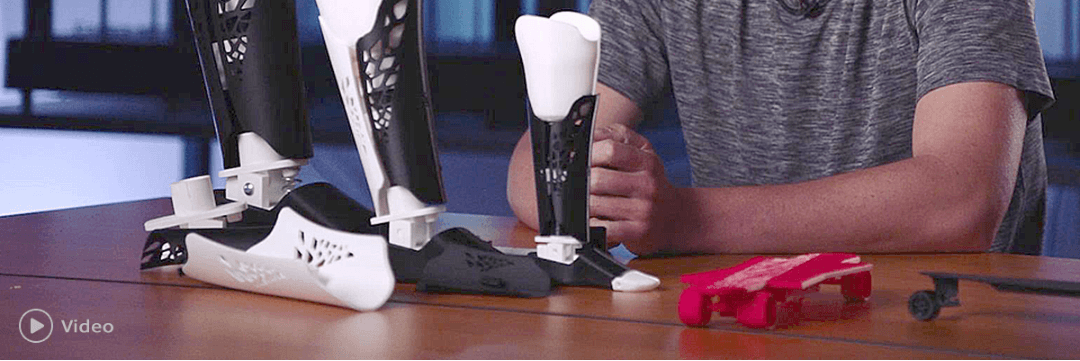
You’ve already seen how Jeff Farr inspires his students with Raise3D; Now, join his engineering student John Gardner and see how Raise3D inspired him to build incredible things.
John Gardner is a student at Foothill High School in Tustin, CA, who has a great passion for engineering and technology. Once introduced to the Raise3D printers at Foothill High School, John began to develop his prototypes for an electric skateboard,
E-Nable: Low-Cost 3D Printed Prosthetics
Mar 16, 2018
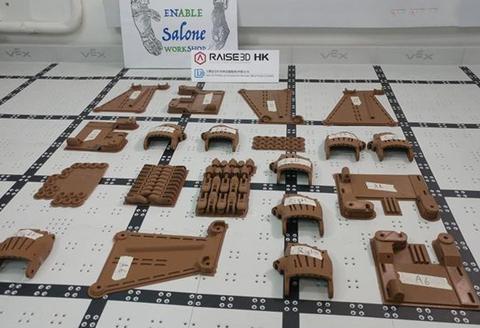
A Global Network Of Passionate Volunteers Using 3D Printing To Give The World A “Helping Hand.”
“At the beginning it was most difficult. I have no experience in 3D printing, so I tried various kinds of 3D printers, but they are limited by the size of the build plate. Because Raise3D has a bigger printer, then I can print prosthetics with adult size. This is wonderful.”
Dr. Edward Choi
Doctor of Virus Amynology
The e-NABLE Community is a global network of teachers, students, engineers, scientists, medical professionals, tinkerers, designers, artists, philanthropists, dreamers, coders, makers and everyday people who just want to make a difference and help to “Give The World A Helping Hand.” They provide 3D printed hands and arms for those in need of an upper limb assistive device.
E-Nable Sierra Leon is a branch of the organization in West Africa made up of a group of volunteers. During the 90s, hundreds of adults and children lost their hands and arms to the brutality of the Civil War. E-Nable Sierra Leon aims to produce wrist-powered hands and elbow-powered arms at the cost of £50-200 apiece.
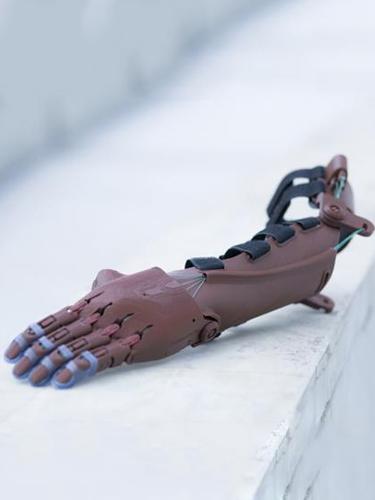
Completed 3D printed prosthetic arm and hand.
Offering prosthesis devices in an area such as Sierra Leon involves its own list of challenges. By utilizing 3D printing, the E-Nable team has been able to offer specially made prosthetic hands and arms to a population that was previously unserviceable.
Before introducing 3D printing, the E-Nable team struggled with
1.Limited options with long turnaround times and high costs associated with traditional prosthetics manufacturing.
2.Inability to serve areas such as Sierra Leon due to high costs.
3.inability to produce large numbers of custom parts.
Since applying 3D printing, the E-Nable team in Sierra Leon has
1. Produced 52 sets of prosthetics within two months.
2.Lowered the cost per prosthetic to $50
Industry: Charity specialized in 3D printed prosthesis
Interviewee: Dr. Edward Choi
Title: Doctor of Virus Amynology
Process:
Albert Fung, a talented biology illustrator from Canada, first designed a CAD template for the initial prosthetic. Using this, the team was able to optimize the model for each patient’s situation. For a client in Sierra Leon, this meant customizing a prosthetic to handle the extreme climate, on a limb with little infrastructure, and in an area with poor economic support. With the cost and time efficiency of 3D printing, Albert Fung and Dr. Choi utilized one year, created 5 versions, and have optimized their design for patients in Sierra Leon.
With the current version available, the E-Nable team measures the dimensions of the local amputee’s forearm and customizes it within the CAD template. All pieces of prosthetics are then 3D printed and can assemble with simple joint locks, cords, and springs. The main part of the prosthetic is printed flat and can be softened by boiling water. This heated prosthetic allows the team to easily shape it directly onto the amputee’s arm for a precision fit.
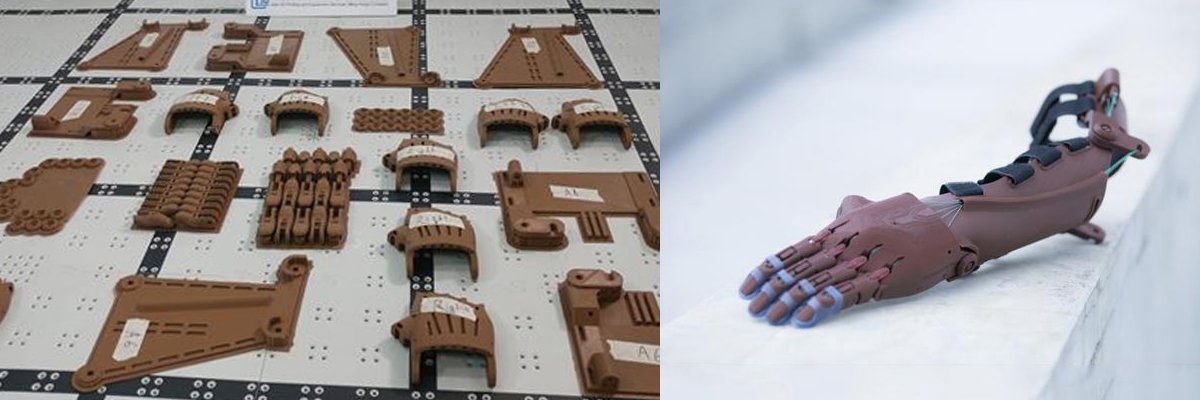
Fingers, elbows, joints, and other components of the prosthetic arm.
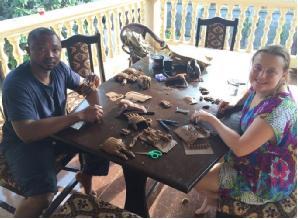
Local volunteers assembling the prosthetic arms.
Challenges:
Before 3D printing was adopted, Dr. Choi and his team's only available option was the traditional prosthesis making process. If they decided to move forward in this method, the costs to both E-Nable and the Sierra Leon patients would have been impossible to achieve.
Common market prices for traditional prosthetics typically costs less than $5000 for a purely cosmetic piece. The costs can reach up to $10000 for a functional prosthetic arm that only offers a split hook.
The traditional process for making prosthetics is involved and requires hand-made parts and labor. Plaster casting is done over the residual limb to fabricate a diagnostic check socket. The check socket is first formed in transparent plastic to allow the observation of pressure points and problem areas. Usually, multiple size sockets are made and modified to achieve the right fit which accumulates time and resources to minimize fitting issues.
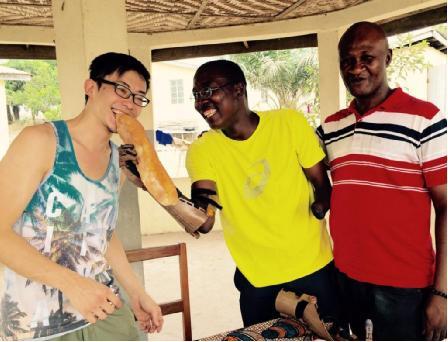
Dr. Choi (left) and Sierra Leon amputee using a 3D printed prosthetic arm.
News
Raise3D printers are helping Boeing provide new technology to the state of Oklahoma.
MAY 15, 2019

The aerospace giant is adapting cutting edge digital technologies like 3D printing and simulation programs as valuable tools at their campus.
In the rapidly evolving age of technology, Boeing has adopted and implemented the latest tools with a focus on digital models. Working in a digital space allows their team to interact with the millions of parts that go into an aircraft, as well as the ability to create and modify hardware components, measure lift and drag, and completely simulate a flight sequence. With the information that’s provided in these digital workspaces, individuals are able to learn the plane’s operation and hardware even without logging real flight hours.
The benefits of these 3D technologies for Boeing mean that each process can be researched and tested further and adjustments can be made in a matter of minutes. Simulation of these components can be tested and refined before being finalized, and the Raise3D Pro2 is able to take these digital designs and print them into physical items.
The implementation of digital tools is changing the landscape of the aerospace industry and Boeing is continuing to research and develop these tools and academic programs as a leader in many fields.
To learn more read the full article below
Stitt tours Boeing tests flight simulator
DAVID DISHMAN / The Oklahoman
Refining Manufacturing with the Pro2 Plus: Big Ass Fans
APR 30, 2019
Big Ass Fans in Lexington Kentucky is utilizing cutting-edge additive manufacturing technology to design, test, and produce their overhead ceiling fans. Thanks to 3D printing, they are able to research the performance of their product and iterate on multiple designs to produce better quality parts at a faster pace than ever before.
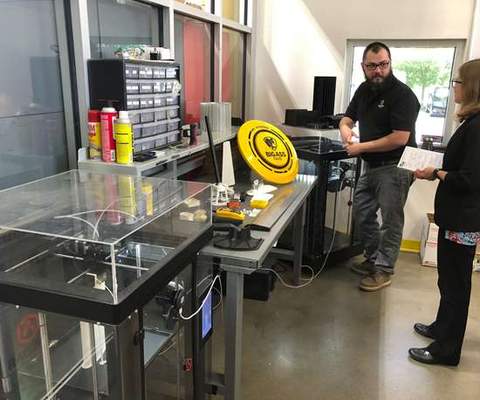
Designer Michael Smith with the workhorse Pro2 Plus printers.
Accelerate Product Development
Each printer puts in about 2,000 hours of work per year—equivalent to the hours worked by a full-time human employee.”
During the design phase, the team uses their spacious Pro2 Plus 3D printers to print various parts such as jigs & fixtures, mold masters, functional prototypes, and occasional end-use parts. In traditional production, these types of R&D parts would require machining our outsourcing from 3rd party suppliers.
With the Raise3D Pro2 Plus, the speed, material compatibility, and large build volume allow for production and testing in-house.
Reduce Time-To-Market
“The company has found that testing early with 3D-printed prototypes has improved designs and helps expedite time to market for new products.”
On-site production allows for greater control and detailed precision in the final product. Once the designs have been tested and become prototypes, they have already seen several variations made through the data that was gathered. Additionally, producing on-site significantly decreases the cost and time frame associated with traditional outsourcing.
It’s from here that the R&D department will forward the final design to be 3D printed to validate the model for its production run.
Utilizing additive manufacturing tools like the Raise3D Pro2 Plus has allowed manufacturers like Big Ass Fans to refine their manufacturing process.
Raise 3D Pro is the newest 3D Printer and has the largest working area. Best 3D Printer with its dual nozzle.
Buy this 3D Printer at the Atarashii store in Philippines.



